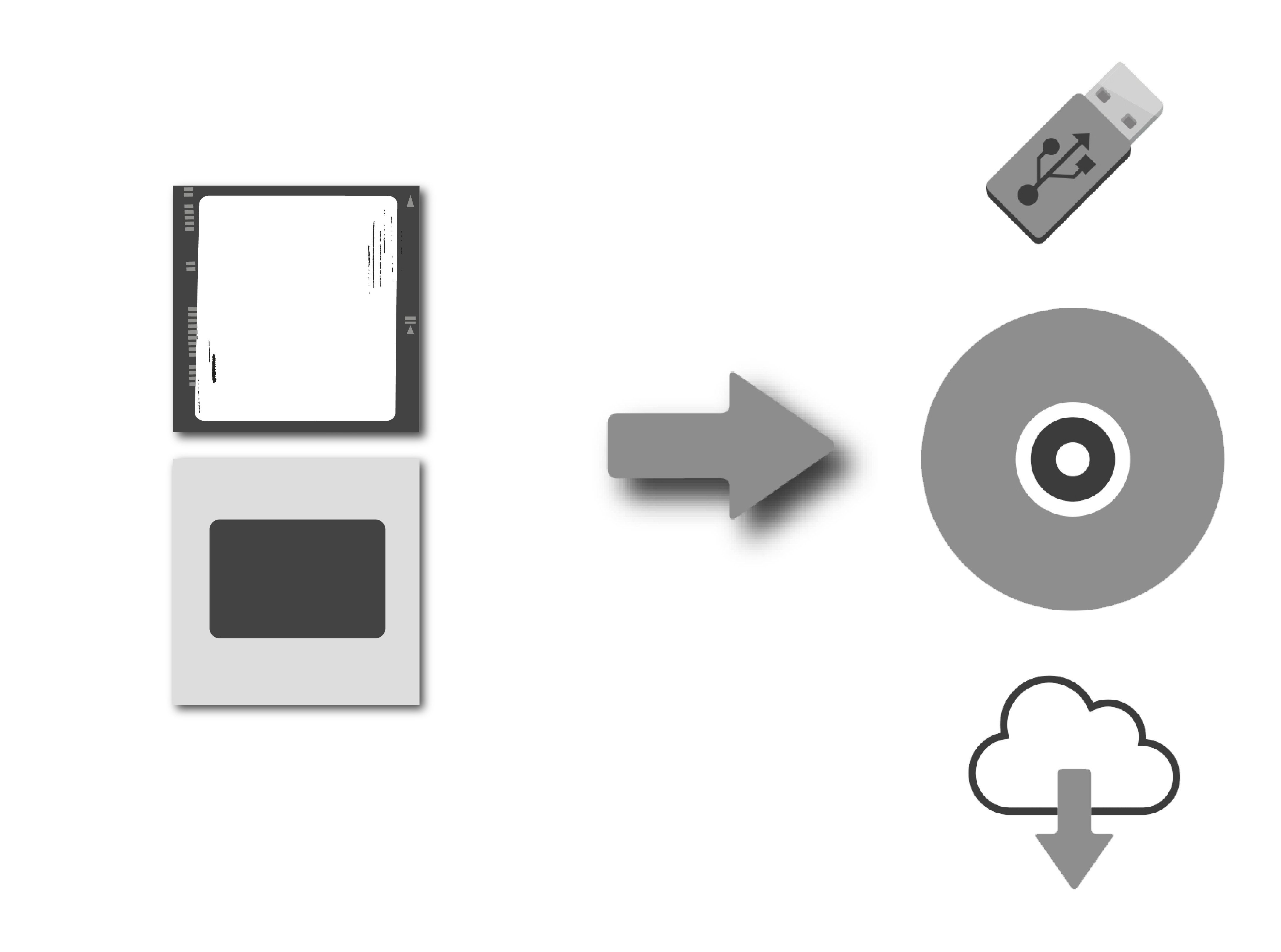Most people are unaware that videotapes begin to deteriorate the moment we start using them and can be completely erased within 10 years. Very few people even know that MiniDV tapes are even more fragile than larger formats such as VHS or Betamax. With these, pixelation can appear even after the first viewing.
The following formats are accepted: VHS, VHS-C, Betamax, Video8, HI8, Digital8, MiniDV, MiniDVD, HDV, memory cards. We also convert files from PCs (DivX, AVI, VOB, etc.) and mobile devices (mobile phones, PDAs, etc.).
All our playback equipment is professional grade, ensuring the highest quality digitization of your tapes.
You can choose to convert your tapes to DVD with a direct transfer, although the current trend is to digitize them into files and save them to a USB flash drive or hard drive. Another option is to download the files from our server directly to your computer. The advantages of digitizing to file over conventional DVD are that we can view our video on countless players, edit it, and share it online with whomever we want.
SUPER 8, REGULAR 8 DIGITIZATION
Movies have never been easy to watch. Film breaks, bends, and flickers during viewing, and with use, it gets scratched and loses color. Repairing films properly without professional equipment is nearly impossible. Projectors are difficult to operate and break easily, and finding lamps or replacement parts for our projector is mission impossible.
The following formats are accepted: Super 8 and 8mm. Films containing original sound will retain this sound. In the case of silent films, the final file will be accompanied by period music appropriate to the images or a selection chosen by the customer, which should be provided together with the film reels when sending the order.
The technique used to scan the film in real time without cogwheels, RGB LED light, and wetgate avoids the problems caused by home digitization. The absence of flickering, hot spots, and scratches allows us to enjoy the vivid colors and smooth motion of our old Kodak Kodachrome films as if they were new.
The digitized film will be delivered in FullHD format with an H264 codec compatible with any player. You can also inquire about our low-cost physical restoration service for Agfa films. This type of film tends to fade over time, with cyan or magenta dominating, and it is also common for them to be attacked by fungi, making them almost impossible to view. In our portfolio, you can see examples of this type of film treated with our techniques.
AUDIO DIGITIZATION
How long has it been since you listened to those old recordings? Videoexpress makes it easy for you. Not only do we digitize the sound and record it on CD or MP3-WAV file so you can enjoy it in the most convenient way, but we also divide the file into tracks so that access is the same as the original, making it easier to listen to. Similarly, your material will be reviewed and, if necessary, processed by software that cleans up the typical clicks produced by vinyl records and the unmistakable hiss that accompanied tape recordings.
The formats accepted for conversion are: LP vinyl records, single and maxi-single vinyl records, cassette tapes, open reel or reel-to-reel tapes.
DIGITIZING SLIDES, NEGATIVES AND PAPER PHOTOS

Photographs on paper, slides, and negatives hold memories that, over time, deteriorate: colors fade, edges curl, and images can tear or become stained. Trying to digitize them at home with a domestic scanner often results in blurry photos, poor lighting, or reflections, and the process can be slow and frustrating. Recovering the original quality of our old photos without professional equipment is almost impossible.
The formats we accept include 35mm, 6×6, and 6×7 slides, black and white or color negatives, and photographs of any paper size. For slides and negatives, the original color fidelity is preserved, while paper photos are digitized at the highest resolution and detail, keeping the original framing and textures. Clients can send their files along with special instructions for color restoration or removal of imperfections.
The technique we use combines high-resolution professional scanning, color correction, and dust and scratch removal, avoiding the common problems of home digitization such as loss of sharpness, shadows, and reflections. Thanks to this process, we can enjoy our images with the vivid colors and definition they had when they were taken, preserving those family memories and special moments forever.


